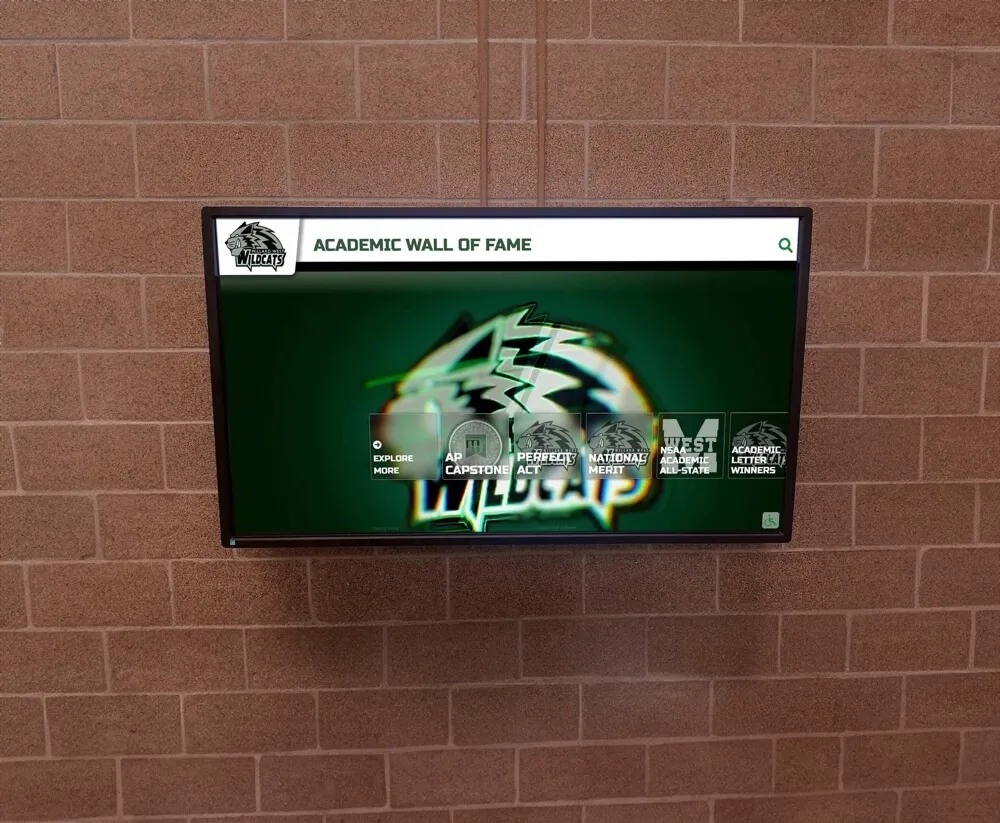Key Takeaways
Complete guide to creating STEM Stars Recognition Walls that celebrate science, technology, engineering, and mathematics excellence. Learn how digital recognition displays inspire STEM achievement and build school cultures where innovation thrives.
Science, technology, engineering, and mathematics drive innovation that shapes our world’s future. Yet despite STEM’s critical importance for economic competitiveness, workforce readiness, and solving global challenges, many schools struggle to celebrate STEM achievement with the same enthusiasm and visibility given to athletic accomplishments. Championship game highlights loop on lobby screens while science fair champions go unrecognized beyond perfunctory certificates. Athletic record boards dominate hallways while mathematics competition achievements remain invisible.
This recognition imbalance sends unintended messages about what schools truly value. When STEM excellence receives less celebration than other achievements, talented students may conclude that intellectual pursuits matter less than athletic success—potentially directing their efforts toward more visibly valued activities despite natural aptitudes for science, technology, engineering, or mathematics.
STEM Stars Recognition Walls transform this dynamic by creating prominent, engaging showcases specifically celebrating scientific inquiry, technological innovation, engineering problem-solving, and mathematical excellence. Whether recognizing individual student achievements, celebrating successful STEM programs, or inspiring the next generation of innovators, dedicated STEM recognition demonstrates institutional commitment to intellectual achievement while building school cultures where curiosity, discovery, and innovation flourish.
This comprehensive guide examines everything schools need to know about implementing STEM Stars Recognition Walls in 2025—from understanding what merits STEM recognition to leveraging modern digital display technology that makes celebrating unlimited achievements possible without space constraints.
Understanding STEM Recognition in Educational Settings
Before designing recognition programs, schools must understand what STEM encompasses, why celebrating STEM achievement matters strategically, and how recognition influences student behavior and educational outcomes.
Defining STEM Excellence Worth Celebrating
STEM represents four interconnected disciplines that together encompass systematic approaches to understanding and shaping the world:
Science: The systematic study of the natural world through observation, experimentation, and evidence-based reasoning. Science encompasses biology, chemistry, physics, earth sciences, environmental sciences, and numerous specialized subdisciplines.
Technology: The application of scientific knowledge to create tools, systems, and solutions that solve problems and improve human capabilities. Technology spans computer science, information technology, biotechnology, robotics, and emerging fields.
Engineering: The creative application of scientific and mathematical principles to design, build, test, and improve structures, machines, systems, and processes that meet human needs.
Mathematics: The study of numbers, patterns, structures, and relationships through logical reasoning and abstract thinking. Mathematics provides the foundational language and analytical tools underlying all STEM disciplines.

While these disciplines possess distinct characteristics, modern STEM increasingly emphasizes their integration. Engineering requires mathematical modeling and scientific understanding. Scientific research depends on technological tools and mathematical analysis. Real-world problem-solving rarely respects disciplinary boundaries—requiring synthesis across multiple STEM domains simultaneously.
Why STEM Recognition Matters Strategically
Recognition serves purposes far beyond simply acknowledging achievement. Strategic STEM recognition advances multiple educational and societal priorities:
Inspiring STEM Participation: Visible recognition of STEM achievers creates aspirational role models for younger students. When students see peers celebrated for science fair excellence, robotics competition success, or mathematics achievement, STEM pathways appear more attractive and accessible than when STEM accomplishments remain invisible.
Validating Academic Identity: Students who receive recognition for STEM achievement may internalize identities as scientists, engineers, programmers, or mathematicians. These academic identities influence course selections, extracurricular participation, college major choices, and ultimately career pathways.
Addressing STEM Workforce Needs: The U.S. Bureau of Labor Statistics projects that STEM occupations will grow faster than non-STEM occupations over the next decade, with computer and information technology occupations expected to grow significantly. Schools cultivating STEM talent through recognition programs contribute to workforce pipelines addressing critical national needs.
Promoting Equity and Inclusion: STEM fields historically show demographic imbalances. Recognition programs can specifically celebrate achievements by underrepresented groups—women in computer science, minority students in engineering, first-generation college students in research—signaling that STEM belongs to everyone and creating diverse visible role models.
Building 21st Century Skills: Beyond domain knowledge, STEM activities develop critical thinking, problem-solving, collaboration, and perseverance—competencies valuable across all career paths. Recognizing STEM participation validates these transferable skills regardless of students’ ultimate professional directions.
Categories of STEM Achievement Worth Recognizing
Comprehensive STEM recognition extends beyond traditional academic honors to celebrate diverse forms of excellence across all four STEM domains.
Academic STEM Achievement
Traditional coursework excellence forms the foundation of STEM recognition but deserves more sophisticated acknowledgment than generic honor roll listings.
Advanced Course Completion: Recognition for successfully completing rigorous STEM coursework including AP Computer Science, AP Physics, AP Calculus, AP Chemistry, AP Biology, advanced mathematics sequences, engineering pathways, and specialized technology courses. Course completion recognition validates students who challenge themselves with rigorous content rather than selecting easier pathways.
Grade Point Achievement: STEM-specific honor roll or dean’s list recognition for students achieving high GPAs across STEM courses specifically. Subject-specific GPA calculations demonstrate sustained excellence within STEM disciplines rather than overall academic performance potentially dominated by non-STEM courses.
Perfect Scores and Academic Milestones: Recognition for perfect AP examination scores, exceptional standardized test performance in STEM subjects, mastery of advanced mathematics concepts, or other measurable academic milestones demonstrating exceptional STEM capability.
STEM Scholarship Recipients: Students earning STEM-focused scholarships from National Merit, corporate sponsors, university programs, or STEM-specific foundations merit recognition celebrating both academic achievement and external validation of promise in STEM fields.
STEM Competition Excellence
Competitions provide objective measures of STEM capability while requiring students to apply knowledge in performance settings beyond classroom assessments.
Science Fair and Research Competitions: Achievement in science fairs at school, regional, state, or national levels including Intel International Science and Engineering Fair (ISEF), Regeneron Science Talent Search, Junior Science and Humanities Symposium, and numerous regional science fairs. Research competitions validate scientific inquiry skills, experimental design, and ability to communicate findings.
Mathematics Competitions: Success in mathematics competitions including American Mathematics Competitions (AMC 8, AMC 10, AMC 12), American Invitational Mathematics Examination (AIME), USA Mathematical Olympiad (USAMO), MATHCOUNTS, and state-level mathematics competitions. These contests assess problem-solving capabilities extending beyond standard curriculum content.
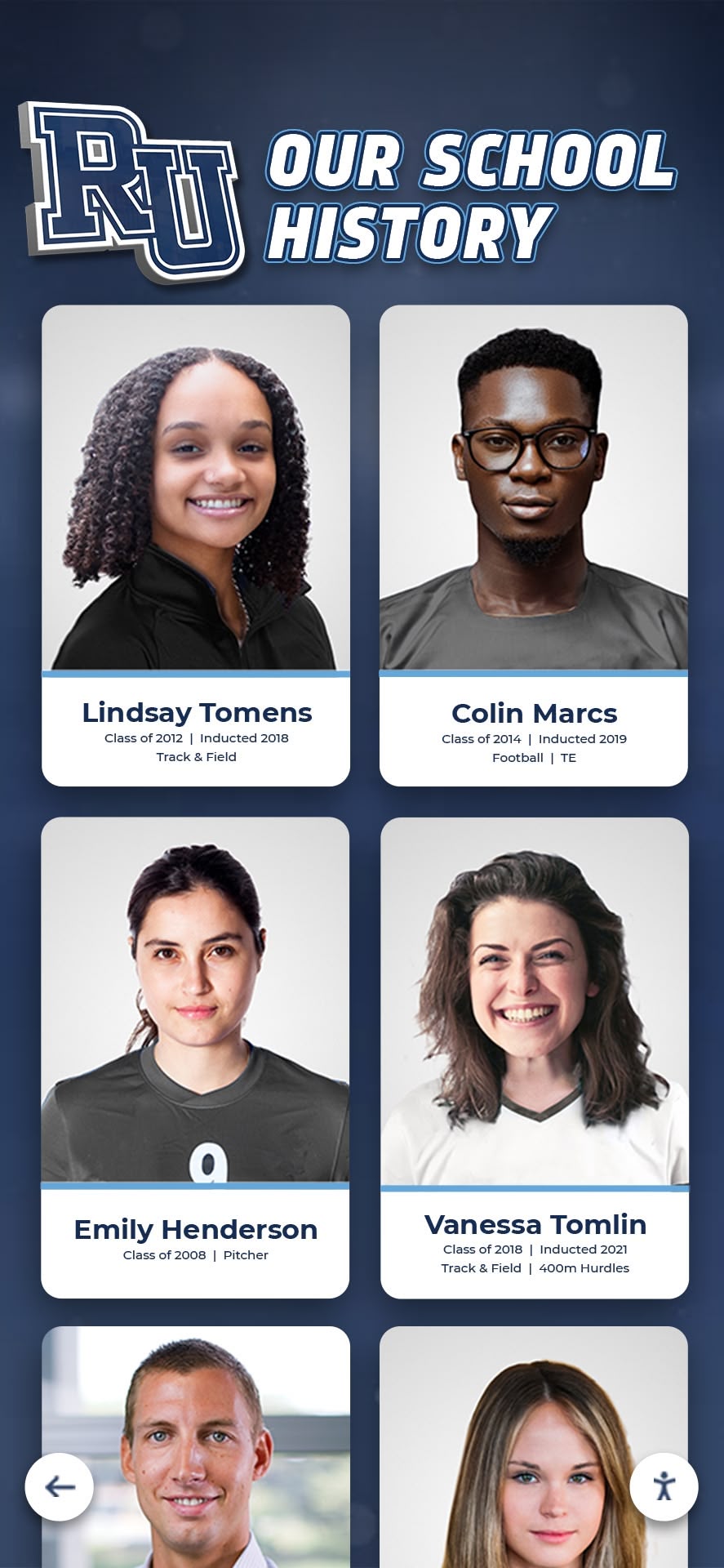
Robotics Competitions: Achievements in FIRST Robotics Competition (FRC), FIRST Tech Challenge (FTC), VEX Robotics, or other robotics competitions requiring integration of engineering, programming, problem-solving, and teamwork. Robotics competitions provide authentic engineering experiences requiring sustained effort over competition seasons.
Computer Science and Programming Competitions: Recognition for success in coding competitions, hackathons, Capture the Flag cybersecurity competitions, USA Computing Olympiad (USACO), or programming challenges. Computer science competitions assess algorithmic thinking and coding proficiency increasingly essential across STEM careers.
Engineering Design Competitions: Achievements in Engineering Olympics, Technology Student Association (TSA) competitions, design challenges, or engineering showcases where students design, build, test, and improve solutions to defined problems.
Science Olympiad: Team and individual recognition for Science Olympiad competitions spanning multiple STEM disciplines through diverse event types testing knowledge, laboratory skills, engineering design, and problem-solving across biology, chemistry, physics, earth science, astronomy, and technology.
STEM Honors Societies and Recognition Programs
External recognition programs from established organizations provide standardized acknowledgment of sustained STEM excellence.
National Honor Societies: Membership in subject-specific honor societies including Mu Alpha Theta (mathematics), National Science Honor Society, Technology Student Association, and computer science honor societies recognizes sustained excellence combined with character and service.
National Recognition Programs: As of 2025, the College Board offers academic honors including recognition for achievements on AP STEM examinations and PSAT-related assessments, providing nationally standardized acknowledgment of exceptional STEM capability.
Presidential Education Awards: Presidential Education Award Program recognition for academic achievement including students demonstrating excellence in STEM subjects through grades, standardized assessments, and teacher recommendations.
State and Regional STEM Recognition: Many states implement STEM recognition programs like North Carolina’s STEM Schools of Distinction or state-level student STEM awards honoring exceptional individual or team achievements.
STEM Enrichment and Leadership
Beyond formal competitions and coursework, numerous STEM enrichment experiences deserve recognition.
Research Experiences: Recognition for participating in authentic research through university partnerships, summer research programs, independent study projects, or mentored scientific investigations producing original contributions to knowledge.
STEM Leadership: Leadership positions in STEM clubs including robotics team captains, Science Olympiad coordinators, coding club presidents, mathematics tutors, or student organizers of STEM events and activities.
STEM Service and Outreach: Students conducting STEM outreach through elementary school science demonstrations, community technology training, environmental conservation projects, or initiatives bringing STEM education to underserved populations.
Published Work and Patents: Students publishing scientific papers, presenting research at conferences, or earning patents for inventions represent exceptional achievements meriting special recognition.
STEM Summer Programs and Camps: Participation in competitive STEM summer programs, research experiences for undergraduates (REUs), or selective enrichment camps like Ross Mathematics Program, Mathcamp, or specialty science camps.
Designing Effective STEM Stars Recognition Walls
Creating recognition displays that genuinely inspire students and celebrate achievement requires thoughtful design addressing both content and presentation.
Location and Visibility Strategies
Recognition impact correlates directly with visibility. Hidden displays in science department corridors reach limited audiences while prominent placements create school-wide awareness of STEM excellence.
Main Entrance Areas: Positioning STEM recognition displays in school entrances ensures maximum visibility for students, families, visitors, and community members. Entry placement signals institutional pride in STEM achievement while providing daily exposure inspiring current students.
Science Wing Locations: Dedicated STEM recognition in science and mathematics building wings creates immersive STEM environments where students pursuing these subjects encounter continuous reminders of excellence and possibility.
Commons and Cafeteria Areas: High-traffic gathering spaces offer extended viewing opportunities during lunch and passing periods. Multiple exposures over time build familiarity with STEM achievers and normalize STEM participation.
Athletic Facilities Integration: Intentionally placing STEM recognition near or within athletic spaces challenges the implicit hierarchy valuing athletic achievement over intellectual accomplishment. Side-by-side placement of athletic recognition and academic recognition communicates equivalent institutional value.
Multiple Distribution Points: Rather than concentrating all STEM recognition in single locations, distributed displays throughout schools ensure STEM visibility across diverse spaces while accommodating more comprehensive recognition than single locations permit.
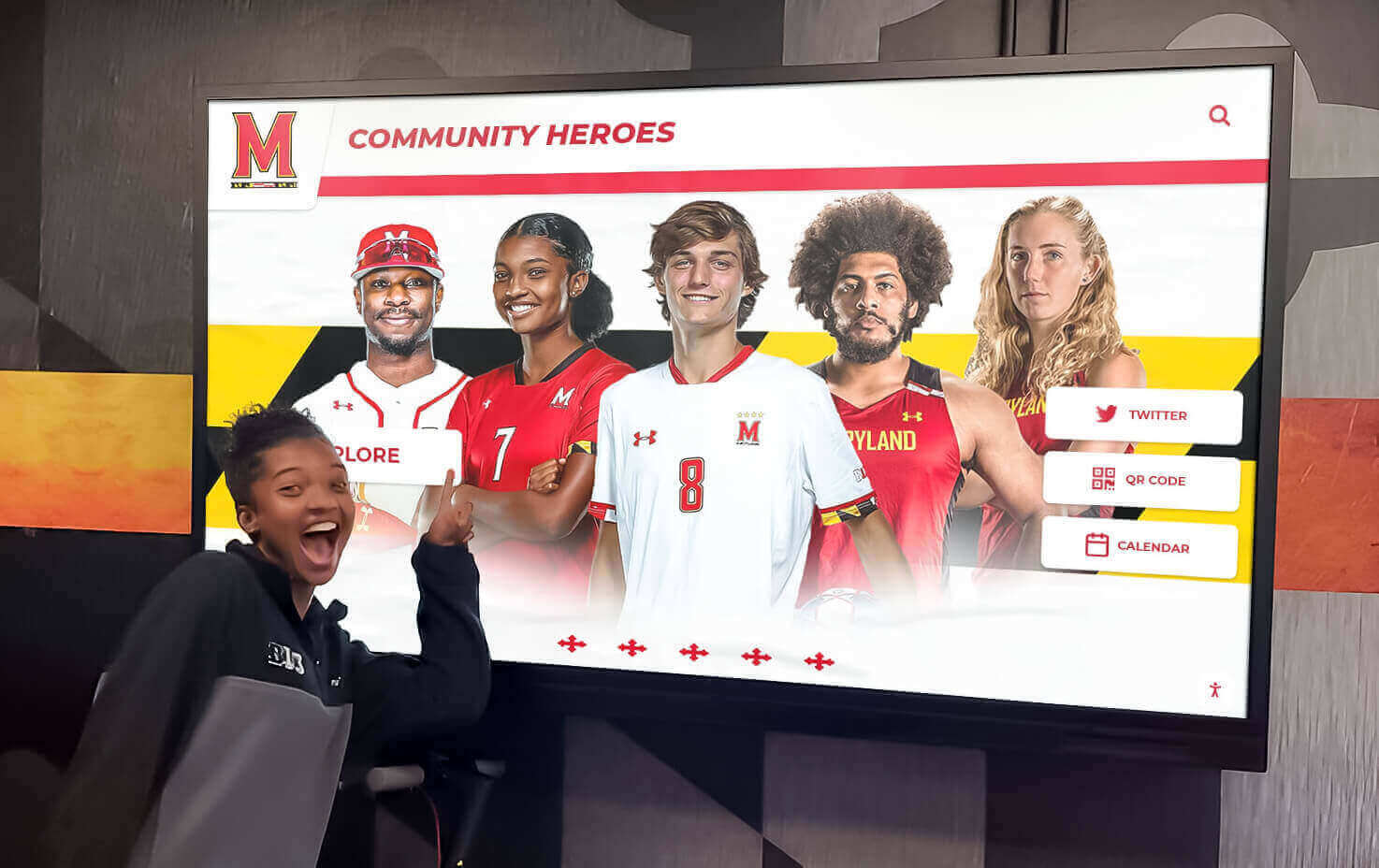
Content Organization and Categories
Logical organization helps visitors discover content efficiently while ensuring diverse STEM achievements receive appropriate acknowledgment.
Discipline-Based Organization: Separate sections for science, technology, engineering, and mathematics allow visitors to explore specific areas of interest while ensuring each discipline receives dedicated visibility rather than generic STEM grouping that may overemphasize certain fields.
Achievement Type Categorization: Organization by achievement type—coursework excellence, competition success, research accomplishments, leadership contributions—enables students to see multiple pathways to recognition rather than assuming competitions represent the only way to earn acknowledgment.
Temporal Organization: Chronological organization preserving recognition across years creates historical context while allowing students to see progression and evolution of STEM programs. Digital systems enable both current and historical views simultaneously through filtering capabilities.
Search and Discovery Features: Robust search functionality by student name, year, achievement type, or discipline ensures visitors can locate specific content quickly while browsing capabilities encourage serendipitous discovery of impressive accomplishments visitors didn’t specifically seek.
Individual vs. Team Recognition
STEM achievements often involve collaboration requiring thoughtful approaches balancing individual acknowledgment with team celebration.
Individual Achievement Profiles: Personal profiles celebrating individual students provide aspirational role models while giving each achiever dedicated recognition. Individual profiles suit academic achievements, individual competition success, and research accomplishments primarily driven by single students.
Team Recognition: Many STEM accomplishments—robotics teams, Science Olympiad squads, research collaborations—involve collective effort deserving team-based recognition. Team profiles can include entire roster listings, team photos, achievement summaries, and links to individual team member profiles providing both collective and personal acknowledgment.
Hybrid Approaches: Solutions like digital student recognition displays enable both individual and team views of the same achievements, allowing visitors to explore content from multiple perspectives—browsing team accomplishments or searching for individual students’ complete achievement portfolios across all activities.
Modern Digital Display Technology for STEM Recognition
Traditional trophy cases and static bulletin boards create inherent limitations that digital recognition technology decisively overcomes.
Limitations of Traditional STEM Recognition
Physical recognition displays face fundamental constraints:
Finite Space: Physical display capacity limits how many achievements receive recognition. As science fairs, competitions, and academic honors accumulate over years, space exhaustion forces difficult choices about which accomplishments remain visible and which disappear into storage.
Update Difficulty: Adding new recognition to physical displays requires printing materials, physically traveling to display locations, removing old content, and installing replacements. This manual effort creates barriers to frequent updates, meaning recent achievements may wait weeks or months before receiving visible acknowledgment.
Limited Context: Physical space constraints typically limit recognition to names, dates, and brief achievement descriptions. Deeper context—project abstracts, competition details, achievement significance—rarely fits within physical display constraints.
Accessibility Limitations: Physical displays serve only visitors who can physically access school buildings during times when facilities are open. Family members living elsewhere, alumni, and community members lack access to recognition confined to physical locations.
Static Presentation: Once installed, physical recognition remains unchanged until someone manually updates displays. Familiar static content becomes psychologically invisible as students develop cognitive blindness to unchanged environmental elements they pass daily.
Digital Recognition Display Advantages
Interactive touchscreen displays and web-based platforms address traditional limitations while creating new engagement possibilities impossible with physical displays.
Unlimited Recognition Capacity: Digital storage eliminates space constraints entirely. A single touchscreen can showcase comprehensive profiles for hundreds or thousands of STEM achievers across decades without requiring additional physical space as content grows. This unlimited capacity enables schools to recognize every noteworthy achievement rather than selecting only the most exceptional accomplishments due to space scarcity.
According to research, 63% of people report that digital signage catches their attention compared to 30% who notice traditional signs. This increased engagement means STEM recognition actually gets noticed rather than becoming invisible wallpaper students unconsciously ignore.
Rich Multimedia Content: Digital platforms support high-resolution photography, detailed text narratives, video content, document attachments, and interactive elements impossible with static displays. Science fair projects can include photos of experimental setups, video presentations, complete abstracts, and judge feedback. Robotics achievements can feature competition video highlights. Research accomplishments can link to published papers or conference presentations.
Instant Updates: Cloud-based content management enables recognition updates from any device within minutes rather than requiring hours of manual physical display work. After weekend competitions or science fairs, administrators can publish achievements Monday morning ensuring timely recognition that feels current and relevant.
Global Accessibility: Web-based platforms extending recognition beyond physical displays make STEM achievements accessible to anyone, anywhere with internet access. Students can share their recognition profiles with distant family members. Alumni can explore current student accomplishments. Prospective families can research STEM programs before visits. This expanded reach amplifies recognition impact exponentially beyond limited on-campus visibility.
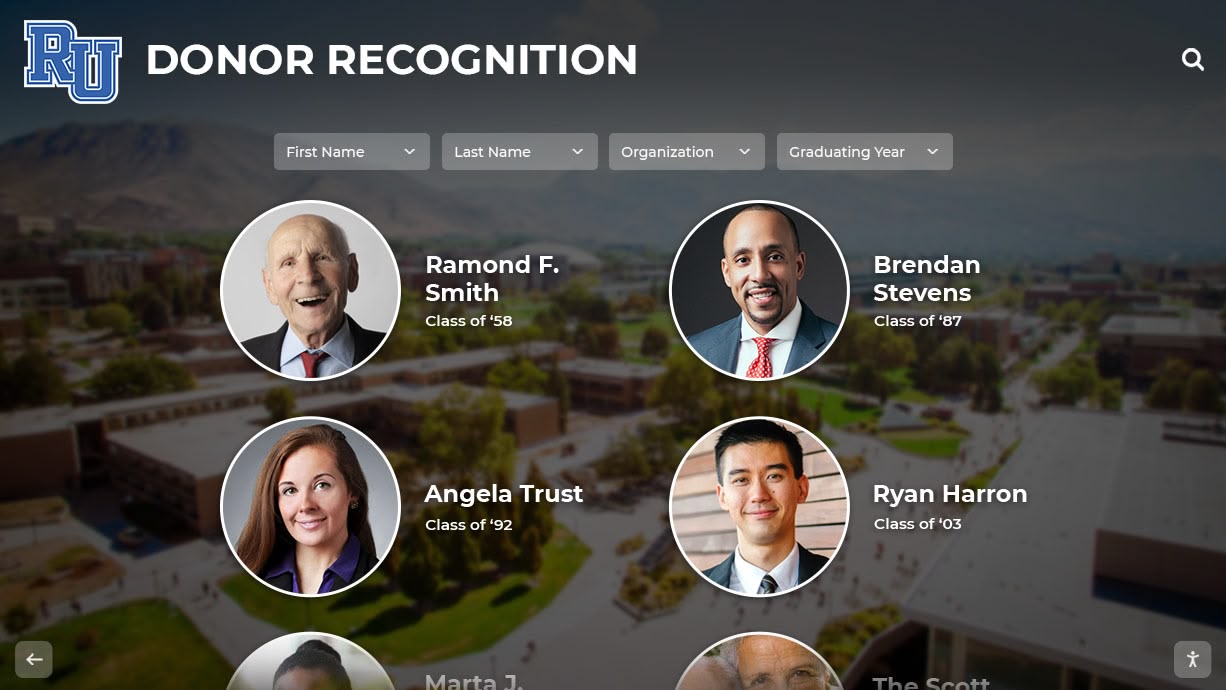
Search and Filtering: Digital platforms include powerful discovery tools allowing visitors to search by name, filter by discipline, browse specific years, or explore particular achievement types. This searchability makes large recognition databases useful rather than overwhelming while enabling personalized exploration based on individual interests.
Analytics and Engagement Data: Digital systems provide detailed analytics showing total interactions, popular content, search patterns, peak usage times, and engagement trends. These insights demonstrate recognition program value to administrators while identifying optimization opportunities.
Solutions like digital recognition displays designed for schools provide purpose-built platforms specifically for educational recognition, offering intuitive interfaces requiring no technical expertise while creating engaging user experiences that capture attention.
Implementing Digital STEM Recognition Displays
Successful implementation requires addressing both technical and organizational dimensions.
Hardware Selection: Commercial-grade touchscreen displays sized appropriately for viewing distances and traffic patterns provide reliable long-term performance. Displays of 55-65 inches suit most hallway applications, while larger spaces may warrant 70-86 inch screens. Purpose-built interactive displays designed for continuous operation provide durability consumer televisions cannot match.
Software Platform: Recognition-specific platforms like Rocket Alumni Solutions offer comprehensive content management systems designed for non-technical users. Intuitive interfaces enable STEM coordinators, science teachers, and administrative staff to add achievements, upload media, and organize content without programming knowledge or IT department intervention.
Content Strategy: Launch with recent achievements from the past 3-5 years ensuring immediate relevance for current students and families. Systematically expand backward into historical content as time permits. Establish sustainable processes for ongoing additions after competitions, academic recognitions, and program milestones.
Promotion and Awareness: Active promotion ensures stakeholders know about STEM recognition displays and explore content. Announcements during STEM-focused events, social media features highlighting specific achievers, newsletter articles explaining how to access recognition, and physical signage directing traffic to displays all build awareness and encourage engagement.
Integration with Existing Communications: Link recognition content from school websites, social media channels, and email communications. Feature STEM achievers in newsletters with links to complete profiles. Share recognition highlights during open houses and recruitment events. This integration extends visibility beyond those who encounter physical displays while reinforcing institutional commitment to STEM excellence.
Building STEM Recognition Programs That Inspire
Technology enables comprehensive STEM recognition, but strategic program design determines whether recognition genuinely motivates students and transforms school culture.
Inclusive Recognition Philosophies
Recognition programs can either reinforce narrow definitions of STEM excellence accessible to few students or embrace inclusive approaches celebrating diverse pathways to achievement.
Multiple Achievement Pathways: Recognition programs acknowledging various forms of STEM excellence—coursework achievement, competition success, research accomplishments, STEM leadership, service, and enrichment participation—create multiple ways students can experience being celebrated rather than limiting recognition to competition winners exclusively.
Growth and Improvement Recognition: Celebrating significant improvement alongside absolute achievement validates students working to develop STEM capabilities even when starting from modest skill levels. Improvement recognition proves particularly important for students from backgrounds with limited prior STEM exposure who may demonstrate exceptional growth despite not immediately achieving top performance levels.
Effort and Persistence Awards: STEM fields require sustained effort through challenges and setbacks. Recognition specifically honoring persistence through difficult coursework, sustained commitment to long-term research, or resilience through competition disappointments validates qualities essential for STEM careers beyond raw intellectual capability alone.
Broadening Participation Recognition: Many schools implement programs specifically recognizing achievements by historically underrepresented groups in STEM—women in computer science or engineering, minority students in advanced mathematics, first-generation college students in research programs. While potentially controversial, targeted recognition can create visible role models particularly important for students who may otherwise see few people like themselves achieving STEM excellence.
Connecting Recognition to Aspirational Goals
Effective recognition doesn’t simply acknowledge past achievements but actively inspires future accomplishments.
Career Pathways Integration: Recognition profiles that include current career information or professional accomplishments of alumni STEM stars help students connect school achievements to real-world success. Learning that a former robotics team captain now works as a aerospace engineer or a Science Olympiad competitor became a medical researcher makes STEM career pathways feel tangible and accessible.
College Destination Information: Including college destinations and majors for recognized students helps younger students understand how STEM achievement translates to higher education opportunities. Seeing that STEM excellence correlates with admission to competitive universities or receipt of substantial scholarships reinforces recognition’s practical value beyond symbolic acknowledgment.
Mentorship Connections: Recognition platforms can facilitate connections between current students and alumni STEM achievers willing to serve as mentors, answer questions, or provide advice. These intergenerational connections extend recognition’s impact from passive acknowledgment to active relationship-building supporting current students’ STEM journeys.
Skill and Competency Highlighting: Recognition that explicitly names skills developed through STEM activities—critical thinking through research, perseverance through challenging coursework, collaboration through team competitions, communication through science fair presentations—helps students understand transferable capabilities they’re developing valuable across all career paths.
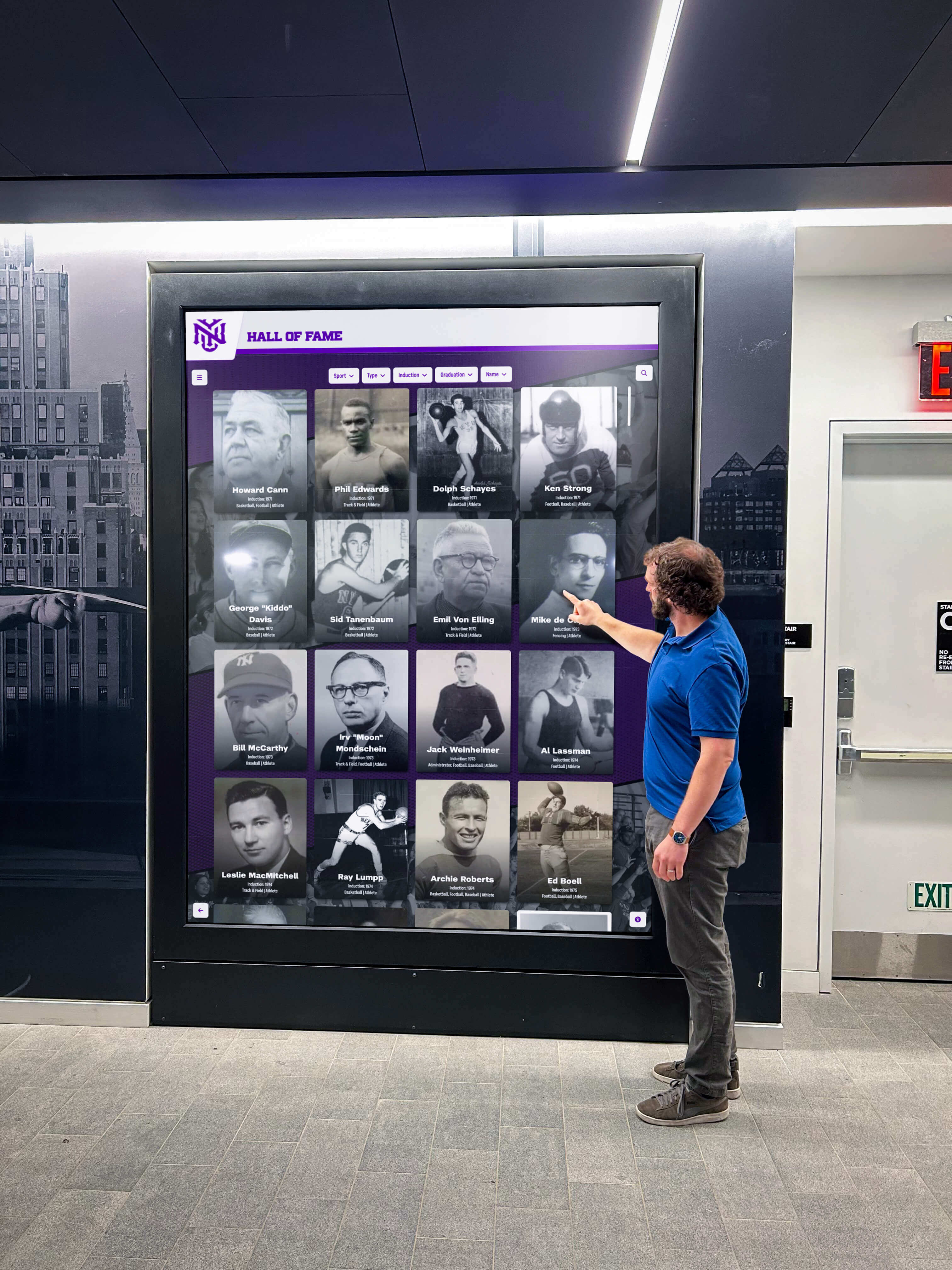
Ceremony and Celebration Integration
While digital recognition provides ongoing visibility, ceremonial moments create memorable experiences that deepen recognition impact.
Annual STEM Recognition Ceremonies: Dedicated events specifically celebrating STEM achievement create prestigious occasions where families attend, administrators present awards, and students receive sustained applause. Formal ceremonies elevate STEM recognition to status equal to athletic banquets or performing arts showcases.
Integration with Existing Events: Schools can integrate STEM recognition into existing assemblies, board meetings, parent events, or community gatherings ensuring STEM achievement receives public acknowledgment even when separate ceremonies aren’t feasible.
Science Fair and Competition Recognition: Immediate recognition during or immediately following science fairs, robotics competitions, or mathematics contests capitalizes on excitement while events remain fresh in participants’ memories. Prompt acknowledgment increases motivational impact compared to delayed recognition weeks or months later.
Multiple Touchpoints: Research suggests recognition impact increases when students experience acknowledgment through multiple channels—formal ceremony presentation, physical certificate or award, digital display profile, social media features, and website recognition. Multi-channel approaches ensure recognition reaches diverse audiences through their preferred communication methods.
Addressing Common Implementation Challenges
Schools implementing STEM recognition programs encounter predictable obstacles. Proactive strategies address these challenges effectively.
Limited STEM Program Development
Schools with nascent STEM programs may lack extensive achievements to recognize initially, creating the paradox that recognition could inspire participation but requires existing achievements to showcase.
Start Where You Are: Begin with whatever STEM achievements currently exist—honor roll in STEM subjects, individual course excellence, participation in any competitions however limited. Modest initial recognition creates foundation for program growth rather than waiting until extensive achievements accumulate.
Celebrate Participation Alongside Achievement: Early-stage programs can recognize students who participate in STEM activities even when competitive success remains modest. Participation recognition encourages involvement while competitive achievement remains aspirational goal rather than entry requirement.
Highlight Program Growth: Recognition can celebrate program development itself—inaugural robotics team formation, new STEM elective offerings, partnerships with universities or businesses, facility improvements, or participation increases. Growth recognition demonstrates momentum and potential even when trophy collections remain small.
Feature Aspirational External Examples: Initial recognition displays can include profiles of famous STEM professionals, notable STEM alumni who graduated before extensive recognition programs existed, or inspirational figures representing STEM career possibilities even while school-specific achievement content develops.
Budget and Resource Constraints
Comprehensive recognition systems require investment that may exceed immediately available budgets.
Phased Implementation: Launch with single recognition display in the highest-visibility location and expand to additional locations as budget permits. Phased approaches distribute costs across multiple years while creating immediate impact with initial implementation.
Grant Opportunities: Many organizations offer grants supporting STEM education including STEM recognition and enrichment programs. National Science Foundation, state education technology programs, corporate STEM education foundations, and local community organizations represent potential funding sources.
Donor Engagement: STEM recognition displays create compelling development opportunities. Alumni who excelled in STEM fields, technology companies, engineering firms, and science-oriented community members represent potential donors for whom STEM recognition resonates personally or professionally.
Technology Budget Integration: Position STEM recognition displays as technology investments serving multiple purposes—student engagement, parent communication, campus wayfinding, event promotion—justifying allocation from general technology budgets rather than exclusively STEM program funds.
Cost-Effective Alternatives: While comprehensive touchscreen systems deliver optimal experiences, more modest approaches can provide meaningful recognition within tighter budgets. Large-format displays showing rotating digital content without touch capability, web-based recognition without physical displays, or hybrid approaches combining modest physical recognition with extensive online content reduce costs while maintaining comprehensive recognition.
Sustaining Long-Term Management
Recognition programs delivering sustained value require ongoing content management and maintenance that can become overwhelming without systematic approaches.
Designated Ownership: Assign specific staff members responsibility for STEM recognition content management rather than diffusing responsibility across multiple people where no one maintains ownership. Clear accountability ensures recognition receives sustained attention rather than languishing when no specific person owns maintenance.
Distributed Content Submission: Rather than requiring single coordinators to identify and document all STEM achievements, establish processes where teachers, coaches, advisors, and students themselves submit recognition nominations or content. Distributed submission distributes workload while capturing achievements that central coordinators might miss.
Integration with Existing Workflows: Connect recognition updates to established processes like quarterly grade reporting, competition result documentation, or award ceremony planning. When recognition updates integrate into existing workflows rather than requiring separate additional tasks, maintenance burden decreases significantly.
Student Involvement: Many schools engage student volunteers, computer science classes, or journalism programs in recognition content creation as authentic learning experiences. Student involvement provides valuable workforce while creating meaningful projects teaching research, writing, design, and project management skills.
Platform Selection Importance: Recognition platforms designed for non-technical users with intuitive content management dramatically reduce ongoing maintenance burden compared to systems requiring programming, web design expertise, or IT department intervention for routine updates. Investment in user-friendly platforms pays dividends in sustainable long-term management.
The Future of STEM Recognition
Recognition technology and practices continue evolving as new capabilities create enhanced engagement opportunities.
Artificial Intelligence Integration
Emerging AI capabilities will enable sophisticated recognition features including automated content suggestions identifying achievements from existing school databases, natural language search understanding conversational queries, personalized recommendations adapting to individual viewing patterns, and intelligent content organization optimizing discovery based on visitor behavior.
Virtual and Augmented Reality
VR and AR technologies could create immersive STEM recognition experiences. Students might explore 3D visualizations of science fair projects, view AR overlays showing additional multimedia content when pointing devices at physical displays, or participate in virtual recognition ceremonies connecting distributed participants.
Social Integration and Sharing
Enhanced social features will enable students to share recognition directly to personal social networks, engage with peers’ achievements through reactions and comments, build personal STEM portfolios aggregating all recognitions across categories, and maintain connections with recognized peers creating ongoing STEM communities.
Predictive Analytics and Intervention
Advanced analytics will identify patterns helping schools understand which recognition approaches generate strongest engagement, which students might benefit from additional encouragement, how recognition correlates with course selections or career interests, and which STEM program elements deliver greatest impact on participation and achievement.
Conclusion: Building Cultures Where STEM Excellence Flourishes
STEM Stars Recognition Walls represent far more than digital displays showcasing student names and achievements. When implemented thoughtfully, these programs create systematic visibility that validates intellectual excellence, communicates institutional values around innovation and discovery, inspires students toward STEM participation and achievement, strengthens school cultures celebrating diverse forms of excellence, preserves institutional memory honoring past achievers while inspiring future generations, supports STEM workforce development by cultivating student interest in STEM pathways, and builds school pride around comprehensive accomplishment including intellectual alongside athletic achievement.
Effective STEM recognition programs share common characteristics including comprehensive coverage celebrating diverse forms of STEM achievement, prominent visibility ensuring recognition reaches broad audiences, rich content providing context and storytelling beyond simple name listings, accessibility extending recognition beyond physical campus locations, sustainability through manageable ongoing maintenance, intentional equity creating opportunities for diverse students to experience recognition, integration with broader STEM program development and recruitment strategies, and celebration moments combining digital ongoing visibility with ceremonial acknowledgment.
The investment schools make in STEM recognition pays dividends in student motivation, STEM program participation, school culture, community pride, and ultimately workforce development supporting economic competitiveness. Recognition communicates that schools notice achievement, value intellectual excellence, celebrate innovation, and believe STEM represents essential 21st century literacy deserving prominent acknowledgment.
Modern solutions like Rocket Alumni Solutions provide comprehensive platforms designed specifically for educational recognition, offering intuitive content management, engaging interactive displays, unlimited digital capacity, and proven approaches that help schools build recognition cultures their students deserve. Whether implementing comprehensive digital recognition systems, interactive achievement displays, or integrated recognition networks, digital technology enables schools to celebrate STEM excellence more comprehensively and effectively than ever before.
Ready to transform how your school celebrates STEM achievement? Explore comprehensive recognition solutions that honor student excellence across science, technology, engineering, and mathematics while building school communities where innovation and intellectual curiosity receive the celebration they deserve. Your students achieve remarkable things in STEM every day—effective recognition programs ensure those achievements inspire continued excellence and build educational environments where future innovators thrive.
